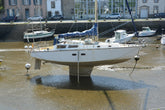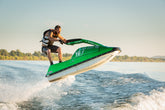As the temperatures drop and the winter chill sets in, many anglers pack up their gear and await the arrival of spring. However, for the dedicated few, cold weather fishing presents an exciting challenge and an opportunity to enjoy their favorite pastime year-round. While the conditions may be harsh, the rewards of landing a trophy catch during the off-season are unparalleled. In this comprehensive guide, we'll explore the essential tips and strategies to help you master the art of cold weather fishing.
Understanding the challenges of fishing in cold weather
Fishing in cold weather presents a unique set of challenges that require adaptability and a deep understanding of the aquatic environment. During the colder months, fish metabolism slows down, and their feeding patterns change dramatically. Additionally, the water temperature, oxygen levels, and currents can influence their behavior and location. To overcome these obstacles, anglers must adjust their tactics and gear accordingly.
Essential gear and equipment for cold weather fishing
Proper preparation is crucial for a successful and comfortable cold weather fishing experience. Investing in high-quality, insulated clothing is essential to keep you warm and dry throughout your excursion. Layering with moisture-wicking base layers, fleece insulation, and waterproof outerwear is recommended. Warm socks, gloves, and a sturdy pair of insulated boots will also help protect you from the elements.
In addition to clothing, you'll need specialized fishing gear designed for cold weather conditions. Consider using a high-quality rod and reel combination with a smooth drag system to prevent freezing. Line choice is also critical, as monofilament can become brittle in extreme cold, making braided or fluorocarbon lines a better option.
Best fishing techniques for cold weather conditions
Adapting your fishing techniques is essential when targeting cold-water species. Slower presentations and subtle movements are often more effective, as fish are less active and their metabolism is reduced. Consider using vertical jigging techniques, such as drop-shotting or jigging spoons, to entice lethargic fish to strike.
Another effective strategy is to focus on areas where fish congregate during the winter months. These locations may include deeper pools, creek mouths, or areas with consistent current or structure that provide shelter and warmth.
Choosing the right bait and lures for cold weather fishing
In cold water conditions, fish are less likely to chase down fast-moving lures or baits. Instead, opt for slower-moving presentations that mimic the behavior of sluggish baitfish or aquatic invertebrates. Live baits, such as minnows or nightcrawlers, can be highly effective, as they provide a natural scent trail and movement that attracts fish.
For artificial lures, consider using jigs, spoons, or soft plastic baits that can be fished slowly along the bottom or suspended near structure. Bright colors or lures with rattles or vibrating components can also help trigger strikes from lethargic fish.
Safety tips for fishing in cold weather
Safety should always be a top priority when fishing in cold weather conditions. Dress appropriately for the weather, and pack extra layers, hand warmers, and a thermos with hot beverages. Wear a life jacket or personal flotation device at all times, as cold water can quickly lead to hypothermia or other life-threatening situations.
It's also essential to monitor ice conditions if fishing from a frozen body of water. Check with local authorities for ice thickness guidelines and never venture onto unsafe ice. Consider investing in ice cleats or studded footwear to improve traction and prevent slips and falls.
Locating fish in cold weather
Finding fish in cold weather can be a challenge, as their behavior and patterns change significantly. Pay close attention to water temperature, currents, and structure, as these factors can influence where fish congregate. Use your electronics, such as fish finders or underwater cameras, to locate potential holding areas and identify depth ranges where fish are most active.
Another effective strategy is to target areas with consistent current or structure that provide shelter and warmth. These locations may include creek mouths, underwater channels, or areas with submerged logs or rocks that offer protection from the elements.
Cold weather fishing tips for bass fishing
Bass fishing during the winter months requires a specialized approach. As water temperatures drop, bass become less active and often seek refuge in deeper water or near cover. Focus your efforts on areas with structure, such as submerged logs, rocks, or drop-offs, where bass can ambush prey while conserving energy.
Slow presentations with jigs, plastic worms, or suspending stick baits can be effective for triggering strikes from lethargic bass. Additionally, consider using smaller lures or downsizing your line to entice strikes from finicky fish.
Cold weather fishing regulations and permits
Before heading out for a cold weather fishing adventure, be sure to familiarize yourself with local regulations and obtain any necessary permits or licenses. Many states and regions have specific regulations for fishing during the winter months, such as closed seasons or catch-and-release requirements, to protect fish populations during this vulnerable time.
Additionally, some areas may require special permits or fees for accessing certain bodies of water or fishing from frozen surfaces. Adhering to these regulations not only ensures a legal and ethical fishing experience but also helps to promote sustainable fishing practices and conservation efforts.
Conclusion: Mastering cold weather fishing
Cold weather fishing presents a unique set of challenges, but with the right knowledge, gear, and techniques, it can be a rewarding and exhilarating experience. By understanding the behavior of fish in cold water conditions, investing in proper equipment, and adapting your tactics, you can increase your chances of success and enjoy the thrill of landing a trophy catch during the off-season.
Remember, safety should always be a top priority when fishing in cold weather. Dress appropriately, monitor ice conditions, and follow all local regulations and guidelines. With patience, perseverance, and a willingness to adapt, you can become a master of cold weather fishing and enjoy this exciting pursuit year-round.


![Veratron OL 43 Smart Marine Monitoring TFT Display [B00126101]](http://arcmarine.co/cdn/shop/files/111172XL_165x.jpg?v=1763678982)
![Veratron Suzuki VMH-35 PWM Display w/Sumitomo Connectors [B00204101]](http://arcmarine.co/cdn/shop/files/111170XL_165x.jpg?v=1763678982)



